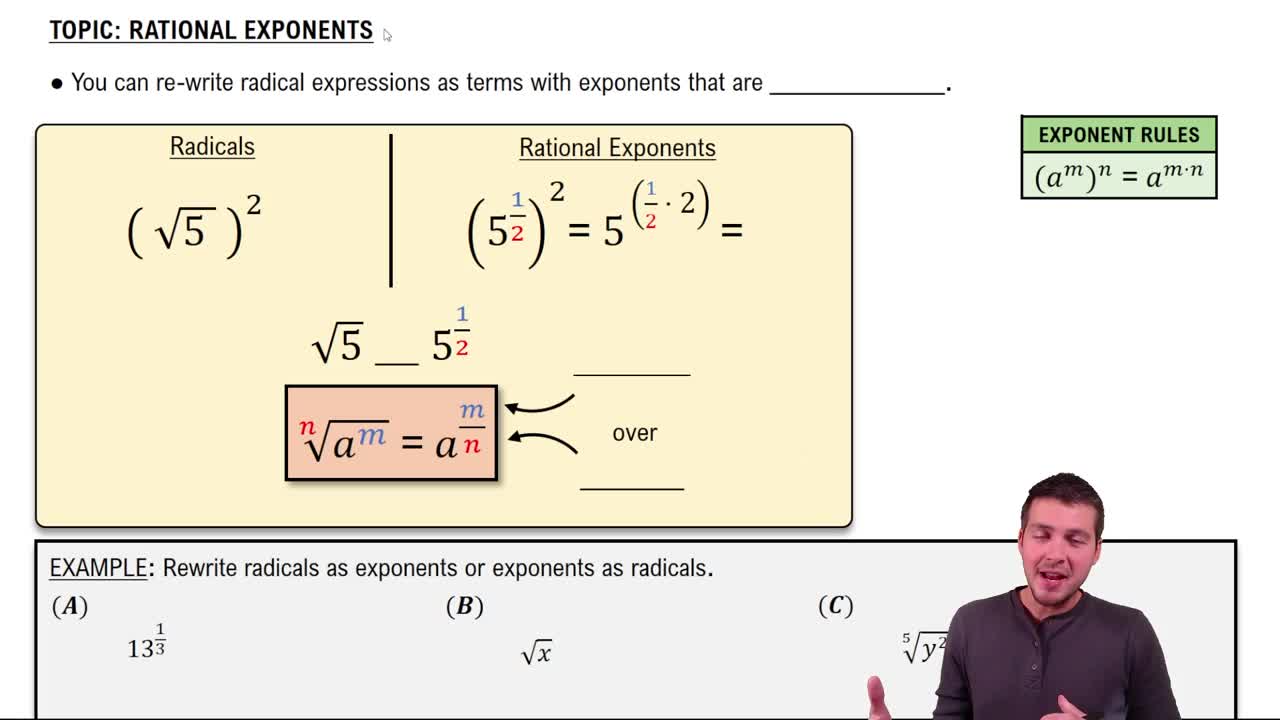Table of contents
- 0. Review of Algebra4h 16m
- 1. Equations & Inequalities3h 18m
- 2. Graphs of Equations43m
- 3. Functions2h 17m
- 4. Polynomial Functions1h 44m
- 5. Rational Functions1h 23m
- 6. Exponential & Logarithmic Functions2h 28m
- 7. Systems of Equations & Matrices4h 6m
- 8. Conic Sections2h 23m
- 9. Sequences, Series, & Induction1h 19m
- 10. Combinatorics & Probability1h 45m
0. Review of Algebra
Radical Expressions
Problem 74b
Textbook Question
Simplify each radical. Assume all variables represent positive real numbers. ∛250
 Verified step by step guidance
Verified step by step guidance1
Identify the prime factorization of 250. Start by dividing by the smallest prime number, which is 2, and continue with the next smallest primes.
Express 250 as a product of its prime factors: \(250 = 2 \times 5^3\).
Recognize that you are dealing with a cube root, \(\sqrt[3]{250}\), and look for groups of three identical factors.
Since \(5^3\) is a perfect cube, it can be taken out of the cube root as a single 5.
Simplify the expression to \(5\sqrt[3]{2}\), as 2 remains under the cube root.
Recommended similar problem, with video answer:
 Verified Solution
Verified SolutionThis video solution was recommended by our tutors as helpful for the problem above
Video duration:
1mPlay a video:
Was this helpful?
Key Concepts
Here are the essential concepts you must grasp in order to answer the question correctly.
Radical Expressions
Radical expressions involve roots, such as square roots or cube roots. The expression ∛250 represents the cube root of 250, which is the number that, when multiplied by itself three times, equals 250. Understanding how to simplify these expressions is crucial for solving problems involving radicals.
Recommended video:
Guided course

Radical Expressions with Fractions
Prime Factorization
Prime factorization is the process of breaking down a number into its prime factors. For example, 250 can be factored into 2 × 5². This technique is essential for simplifying radical expressions, as it allows us to identify perfect cubes or squares that can be simplified out of the radical.
Recommended video:
Guided course

Introduction to Factoring Polynomials
Properties of Exponents
Properties of exponents govern how to manipulate expressions involving powers. When simplifying radicals, these properties help in rewriting the radical in terms of exponents, such as expressing the cube root as a power of 1/3. This understanding is vital for simplifying expressions accurately and efficiently.
Recommended video:
Guided course

Rational Exponents
Related Videos
Related Practice













